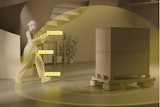Though industrial Ethernet has been evolving for many years, it is quickly becoming the foundation for many manufacturing applications. Industrial Ethernet provides the connectivity and communication that today’s applications demand for productivity and efficiency improvement. With industrial Ethernet, not only is enterprise-wide connectivity possible, but now users have constant access to critical production data, providing the highest level of control and visibility.
With the migration away from traditional point-to-point fieldbus, advanced networking architecture ensures connectivity, collaboration and integration from the device level to enterprise business systems. By examining the performance capabilities and application suitability of EtherNet/IP, Modbus TCP and PROFINET, manufacturers can select the ideal networking solution for continuous, complete control over all production components.
Ethernet Moves Beyond the Office
Industrial Ethernet is based on the IEEE 802.3 standard, for Ethernet commonly found in the office environment but modified for use in industrial automation. In order for Ethernet to be used in the industrial environment, it must be adapted to withstand the environmental conditions that are not found in traditional commercial installations. Most standard uses do not include exposure to extreme temperatures, humidity, vibration, constant flexing and noise that can be induced by drives, robots or other equipment often found on the factory floor.
Early on, Industrial Ethernet companies could not unite administrative, control-level and device-level networks in a single network infrastructure, so they were maintaining separate networks to support their factory floor and business operations. For example, the corporate IT network supports traditional administrative functions, while the control-level network connects manage and monitor devices and the device-level network links the controllers with the plant floor’s I/O devices. By combining the two functions onto one network, this allows for greater efficiency and control over the entire automation operation.
Industrial Networking for Automation
As plants start moving to an Industrial Ethernet solution, it is important to consider some key factors before deciding which network solution works best, such as protocol features and capabilities, the network topology and the overall environmental conditions the network will be subject to.
EtherNet/IP is a communication protocol that is supported by the ODVA for use in industrial automation and process control environments. It takes the Common Industrial Protocol (CIP) and implements it onto the foundation of Ethernet. CIP envelops a wide-ranging suite of messages and services for a variety of applications. EtherNet/IP provides users with a means to deploy standard Ethernet technology for industrial applications. EtherNet/IP can be used with star, tree or line topology, but a switched topology is preferred in industrial applications. The use of managed switches allows the network to be configured to perform as close as possible to real-time behavior, which is often required in industrial applications.
PROFINET is the open Industrial Ethernet standard of PROFIBUS and PROFINET International (PI) for automation. It uses TCP/IP and IT standards and complements them with specific protocols and mechanisms to provide real-time performance capabilities. PROFINET enables the integration of existing Fieldbus systems like PROFIBUS, DeviceNet and Interbus without changes to existing equipment. PROFINET can be used with star, tree or line topology, but each layout needs to consider the overall requirements for the application.
Modbus TCP/IP is the Modbus RTU protocol with a TCP interface running on Ethernet. Modbus is managed by the Modbus-IDA User Organization. TCP/IP refers to Transmission Control Protocol and Internet Protocol, which provides the transmission channel for Modbus TCP/IP messaging. Modbus TCP/IP is commonly used in the industrial environment due to its ease of deployment and maintenance, and because it was developed specifically for industrial applications. Modbus TCP/IP can be used with star, tree or line network topology, and can be implemented with Ethernet technology that has been adapted for use in the industrial environment.
Considerations for Industrial Networking
As demand grows and industries become more competitive, operation data must travel across greater distances, at faster speeds and in larger quantities. Due to this, maintaining reliable enterprise connectivity is necessary for continued overall production. Therefore, protocols connecting the office with the plant floor must offer seamless interoperability among manufacturing enterprise networks. Implementing a complete, end-to-end networking solution provides a wide range of benefits, including a lower overall Total Cost of Ownership (TCO), a higher return on investment (ROI) due to real-time visibility and flexibility, reduced network maintenance and decreased labor costs.
With Ethernet originally being created for the office environment, it is crucial to consider any and all environmental conditions when determining what type of cabling is needed. Industrial Ethernet cabling is designed to meet and exceed the requirements of industrial applications and will generally determine the type of cordset used. Cordsets are expected to perform in applications that involve everything from welding and high-flex robotics to washdown or hygienic conditions. Cordsets must be designed to withstand shock and vibration, crushing and pulling, bending or twisting, dust and dirt, water, oils, chemicals, corrosive gasses or temperature extremes.
Before implementation, plant managers need to consider network communications signal requirements, including CAT 5, 5e, 6, 6A and 7, two pair or four pair cabling, D-code or X-code cordsets, solid or stranded cabling and shielded or unshielded cabling. This will enable users to select an appropriate solution.
Conclusion
Industrial Ethernet goes beyond connecting the back office to the plant floor. Today’s networking technology delivers fast, secure and reliable data transfer factory-wide, so users can proactively improve efficiency and productivity.























